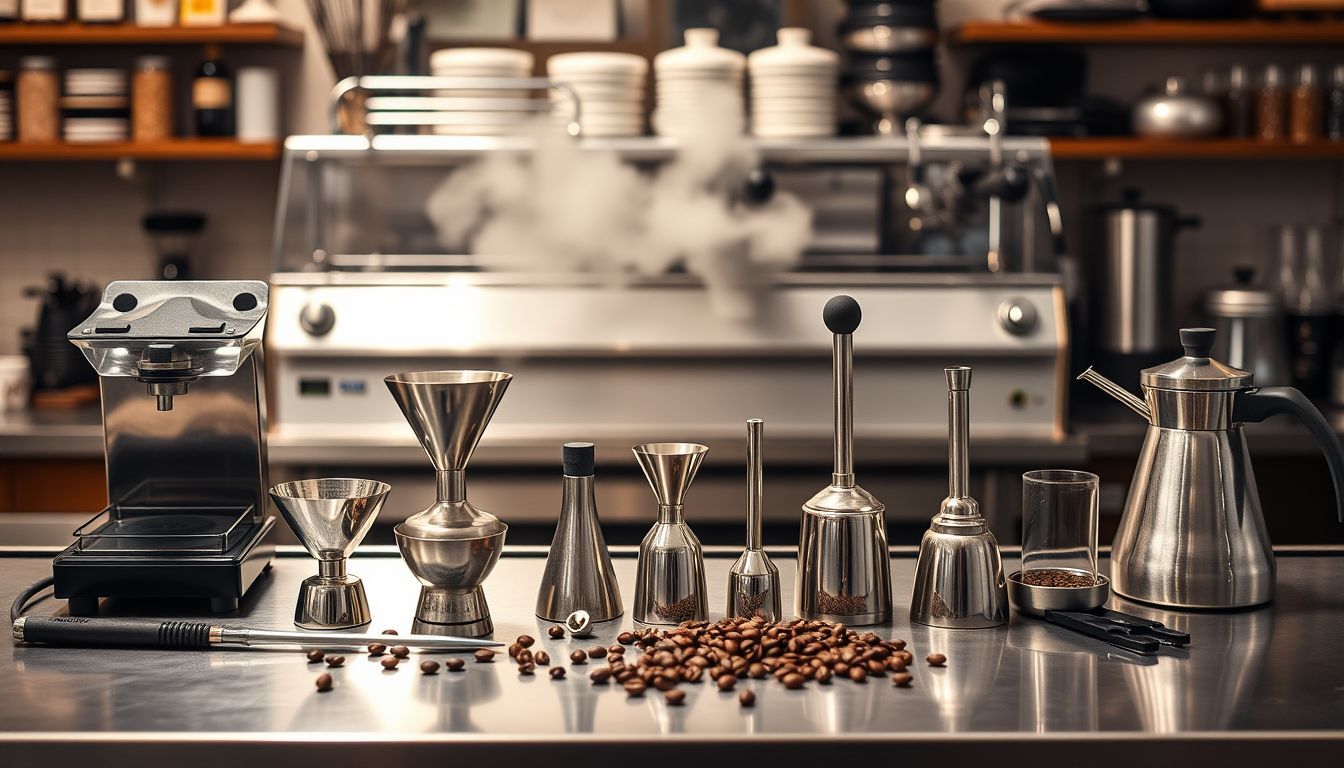The Science of Coffee Foam: How Crema and Froth Enhance Flavor Perception and Enjoyment
Explore how coffee foam, including crema and milk froth, influences flavor perception and enhances the sensory experience of your brew.

Amazon Affiliate Disclosure
This post contains affiliate links. If you purchase through these links, we may earn a small commission at no additional cost to you.
Introduction
The allure of a well-crafted cup of coffee extends beyond its rich aroma and complex flavors; the visual and textural elements play pivotal roles in our overall enjoyment. Among these, the presence of foam—be it the golden crema atop an espresso or the velvety froth crowning a cappuccino—significantly influences our perception and appreciation of coffee. This article delves into the science behind coffee foam, exploring how crema and milk froth enhance flavor perception and elevate the coffee-drinking experience.
Understanding Crema: The Essence of Espresso
What is Crema?
Crema is the golden-brown layer of foam that forms on the surface of a freshly brewed espresso. It results from the emulsification of coffee oils and the release of carbon dioxide during the high-pressure extraction process. This delicate layer is not merely an aesthetic feature; it serves as an indicator of freshness and quality, encapsulating the volatile aromatic compounds that define espresso's distinctive flavor profile.
Formation and Factors Influencing Crema
The formation of crema is influenced by several factors:
- Coffee Bean Freshness: Freshly roasted beans contain higher levels of carbon dioxide, contributing to a more robust crema. As beans age, they lose these gases, resulting in a thinner layer.
- Grind Size and Pressure: A fine grind and appropriate pressure during extraction facilitate optimal emulsification of oils and gases, enhancing crema production.
- Bean Variety and Roast Level: Arabica beans typically produce a lighter crema compared to Robusta beans, which yield a thicker, more substantial layer due to their higher oil content.
Crema's Impact on Flavor Perception
Crema plays a crucial role in flavor perception:
- Aroma Preservation: Acting as a lid, crema traps volatile compounds, releasing them gradually and intensifying the aromatic experience.
- Texture and Mouthfeel: The creamy consistency of crema adds to the body of the espresso, providing a richer mouthfeel.
- Flavor Balance: Crema can impart a slight bitterness, balancing the inherent sweetness and acidity of the espresso, leading to a harmonious flavor profile.
The Role of Milk Froth in Coffee Beverages
Microfoam: The Art of Milk Frothing
In beverages like lattes and cappuccinos, milk froth, or microfoam, is integral to the sensory experience. Microfoam consists of tiny, uniform bubbles created by introducing steam into milk, resulting in a smooth, velvety texture. The quality of microfoam depends on factors such as milk composition, temperature, and frothing technique.
Enhancing Flavor Perception with Milk Froth
Milk froth influences flavor perception in several ways:
- Sweetness Enhancement: The incorporation of air into milk during frothing can enhance the perception of sweetness, reducing the need for added sugars.
- Texture and Mouthfeel: A well-crafted microfoam adds a luxurious texture, making the beverage more indulgent and satisfying.
- Temperature Stability: The insulating properties of milk froth help maintain the beverage's temperature, allowing for a consistent flavor experience throughout consumption.
Multisensory Integration: The Interplay of Visual and Tactile Cues
Our perception of flavor is a multisensory experience, where visual and tactile cues significantly influence taste. The presence of foam adds a visual appeal that sets expectations for texture and flavor. Studies have shown that the color and texture of a beverage can alter taste perception, with lighter-colored drinks often perceived as sweeter and creamier. This phenomenon underscores the importance of foam in shaping our overall coffee experience.
Practical Implications for Baristas and Home Brewers
Understanding the science behind coffee foam can enhance brewing practices:
- Espresso Preparation: Ensuring bean freshness, proper grind size, and optimal extraction pressure can improve crema quality.
- Milk Frothing Techniques: Mastering the art of milk frothing, including temperature control and steam wand positioning, can produce superior microfoam.
- Presentation: Paying attention to the visual presentation, such as latte art, can elevate the sensory experience and customer satisfaction.
Conclusion
The science of coffee foam reveals its profound impact on flavor perception and enjoyment. Crema and milk froth are not mere embellishments but essential components that enhance aroma, texture, and taste. By appreciating and mastering the elements that contribute to quality foam, both baristas and coffee enthusiasts can elevate their coffee experiences, transforming a simple cup into a multisensory delight.

Marcus Thorne
As a journalist, I learned that the truth is often buried under layers of misinformation and time. As a novelist, I get to do the digging. Whether it's a forgotten event from the Cold War or a present-day conspiracy, I build my stories on a foundation of fact, inviting you to question what you think you know.


